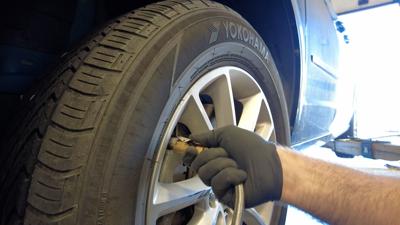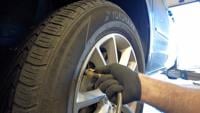DELMARVA- The seasons are changing, and temperatures are dropping. With this decrease in temperature, many people have begun to notice a drop in their tire pressure as well.
It's a common occurrence whenever the weather takes a cold turn. You start your car, only to find the tire pressure symbol illuminated on your dashboard.
There is a simple explanation for this phenomenon. According to Paul Amick, a technician at Meineke, “We remember back to like science class on kinetic energy. Heat is motion. So cold air is denser so it's it's not expanding. When molecules aren’t expanding, they’re closer together. When they're close together, [the tire] doesn't inflate as much.”
The ideal gas law explains this relationship between pressure and temperature. In colder temperatures, the gas molecules inside the tire have less kinetic energy and move more sluggishly, causing them to occupy a smaller volume and reducing the tire's pressure.
Tire pressure can decrease by approximately one pound per square inch (PSI) for every 10-degree Fahrenheit drop in temperature, as the air inside the tire condenses.
To prevent the tire pressure symbol from lighting up in the colder months, Amick suggests, "You might consider setting the tire pressure a few pounds higher, two to three pounds higher, in the wintertime to avoid this issue."
If you suspect an air leak, you can confirm it by spraying soapy water directly onto your tire. Amick explains, "If it bubbles, that's where your air leak is."
As the winter season approaches, Amick emphasizes the importance of regularly checking your tires to ensure safety on the road, stating, "There's no substitute for physically checking your tire pressures. I recommend this for everyone during the winter. Check them every week."
If you ever have any doubts or concerns, seek guidance from your local mechanic. Amick also highlights the significance of checking the pressure in your spare tire, as having a flat spare in the event of a flat tire on the road can be problematic.







